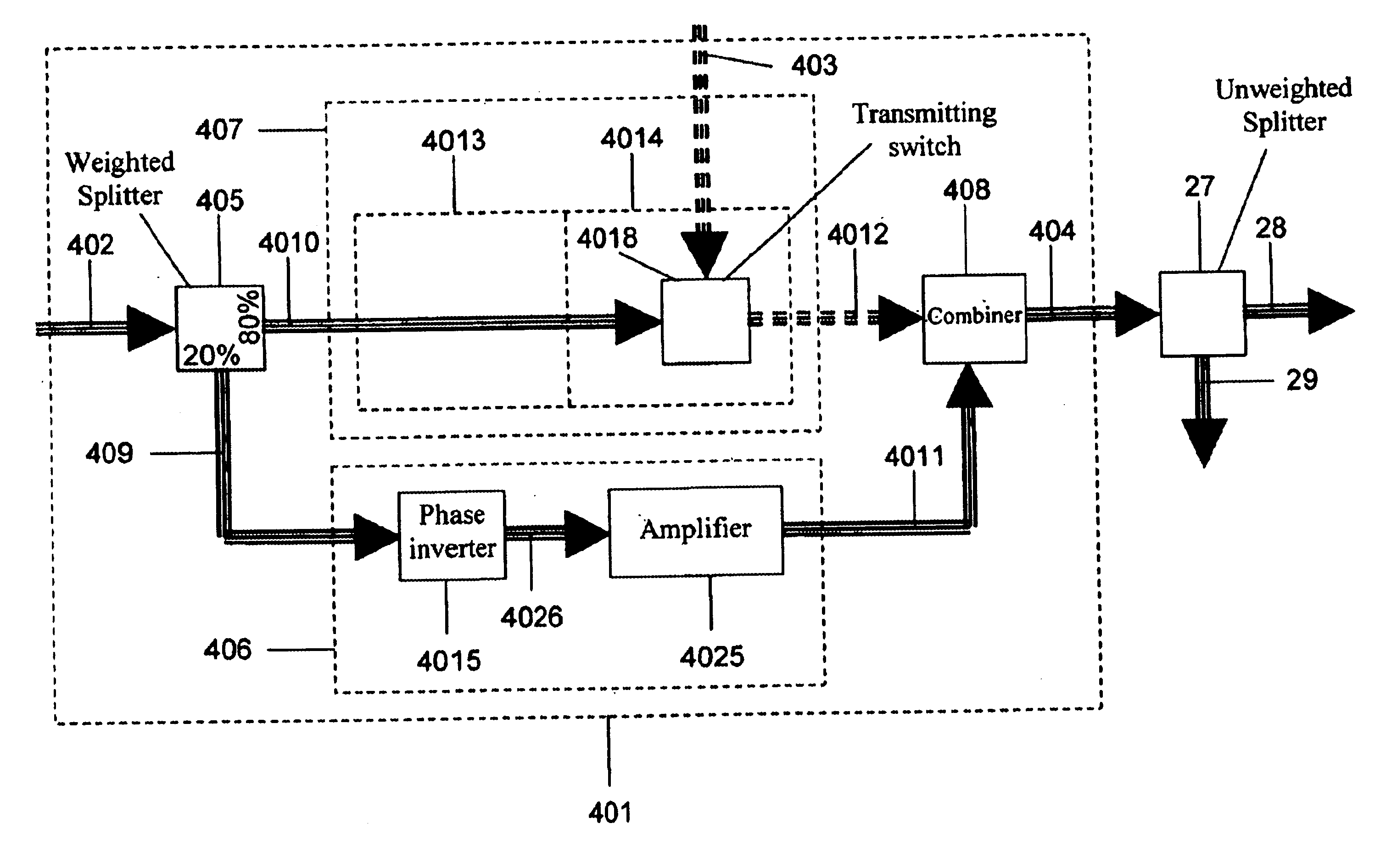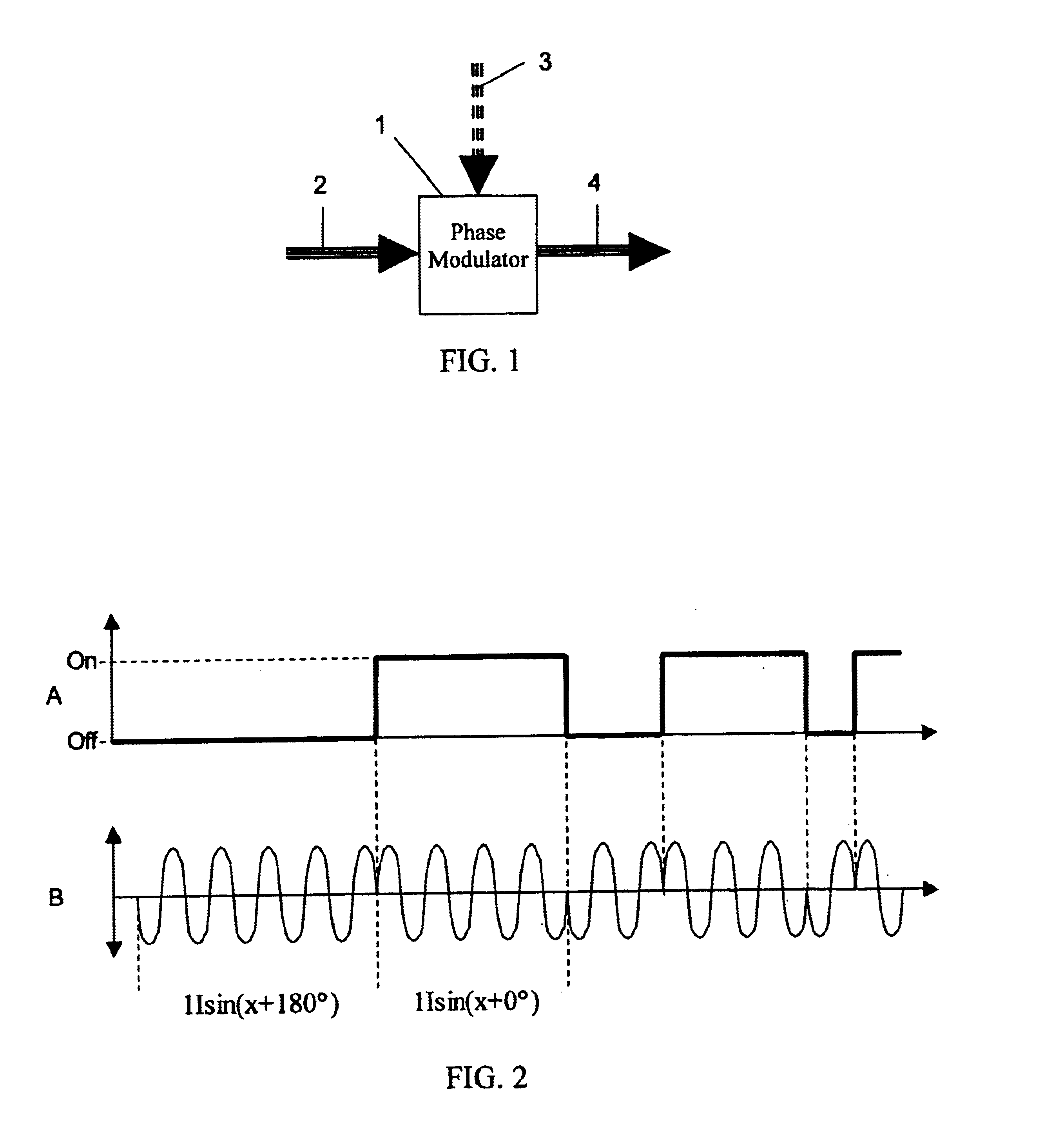Pulse controlled phase modulator
a phase modulator and pulse control technology, applied in the field of optical phase modulators, can solve the problems of not being as efficient as an optical pulse controlled phase modulator, not well suited to phase modulating one optical signal, and relatively slow devices
- Summary
- Abstract
- Description
- Claims
- Application Information
AI Technical Summary
Benefits of technology
Problems solved by technology
Method used
Image
Examples
Embodiment Construction
[0026]Referring to FIG. 1, a pulse controlled phase modulator 1 receives a continuous wave (CW) coherent input signal 2 and a pulsed input signal 3 and produces a continuous wave phase modulated output signal 4. As shown in FIG. 2, the output signal 4, resulting from the pulsed input signal 3, such as a signal A, is a constant magnitude binary phase shift keying (BPSK) signal, such as a signal B, with the same frequency as the CW input signal 2. For example, using the CW input signal 2 as 1I sin(x+0°), when the pulsed input signal 3 is ON, the output signal is 1I sin(x+0°), and when the pulsed input signal 3 is OFF, the output signal 4 is an inverted signal of 1I sin(x+180°) which is equal to −1I sin(x+0°).
[0027]As shown in FIG. 3, the pulse controlled phase modulator 1 consists of a splitter 5, an independent stage 6, a dependent stage 7, and a combiner 8. The splitter 5 receives the continuous wave input signal 2 and divides it into two signals: an independent signal 9 and a depen...
PUM
| Property | Measurement | Unit |
|---|---|---|
| wavelength | aaaaa | aaaaa |
| height | aaaaa | aaaaa |
| height | aaaaa | aaaaa |
Abstract
Description
Claims
Application Information
 Login to View More
Login to View More - R&D
- Intellectual Property
- Life Sciences
- Materials
- Tech Scout
- Unparalleled Data Quality
- Higher Quality Content
- 60% Fewer Hallucinations
Browse by: Latest US Patents, China's latest patents, Technical Efficacy Thesaurus, Application Domain, Technology Topic, Popular Technical Reports.
© 2025 PatSnap. All rights reserved.Legal|Privacy policy|Modern Slavery Act Transparency Statement|Sitemap|About US| Contact US: help@patsnap.com



